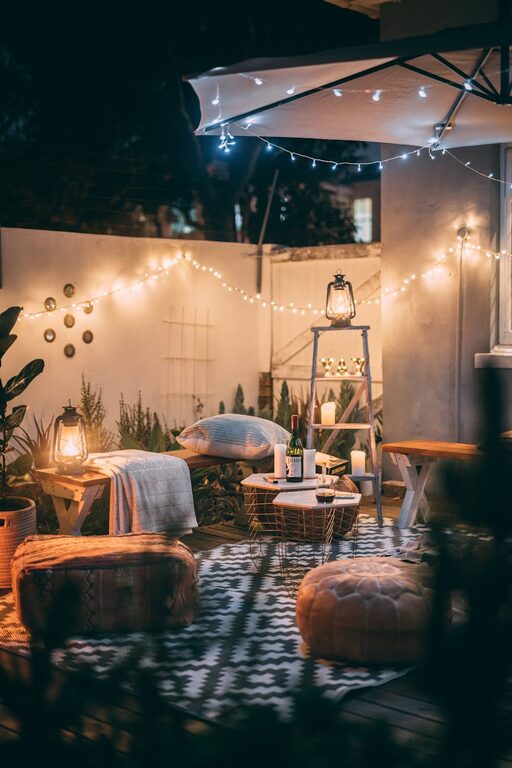
Creating a comfortable and inviting atmosphere in your home starts with the right lighting. Good lighting not only brightens your space but also influences your mood, productivity, and even health. Choosing home lighting that feels comfortable and suits your lifestyle might seem overwhelming, especially with so many options available. This guide will walk you through essential tips to help you select lighting that enhances your space while ensuring comfort.
Why Comfortable Lighting Matters
Lighting affects how we perceive colors, shapes, and space. Poor lighting choices can cause eye strain, headaches, and fatigue, while well-planned lighting supports relaxation and focus. Comfortable lighting balances brightness, color, and placement to complement your activities and interior design.
Understand Different Types of Lighting
To create a well-lit, comfortable home, it’s important to know the three main types of lighting:
1. Ambient Lighting
This is the primary, general light that fills the room. It provides overall illumination and sets the foundation for the lighting design.
2. Task Lighting
Task lighting is focused light for activities that require more illumination, like reading, cooking, or working at a desk.
3. Accent Lighting
Accent lights highlight architectural features, artwork, or decorative elements, adding depth and interest to your space.
Combining these layers thoughtfully creates a balanced and comfortable environment.
Tips for Choosing Comfortable Home Lighting
1. Consider the Purpose of Each Room
Each space in your home has different lighting needs.
– Living room: Soft, warm ambient lighting with options for brighter task lighting near seating areas.
– Kitchen: Bright, clear task lighting over countertops and stove areas, plus ambient lighting for overall visibility.
– Bedroom: Warm, dimmable lights that promote relaxation and facilitate winding down.
– Bathroom: Even, bright lighting near mirrors and softer ambient lighting for comfort.
2. Pay Attention to Color Temperature
Color temperature is measured in Kelvins (K) and affects the mood created by your lighting.
– Warm white (2700K–3000K): Cozy, relaxing – ideal for bedrooms and living rooms.
– Neutral white (3500K–4500K): Balanced, clean look – good for kitchens and bathrooms.
– Cool white (5000K–6500K): Bright, energizing – suitable for workspaces and garages.
Choosing the right color temperature helps make light comfortable and matches the function of the space.
3. Use Dimmable Fixtures
Dimmable lighting lets you adjust brightness based on time of day and activity, enhancing comfort and saving energy. Installing dimmer switches or smart bulbs gives you control and flexibility to create ambiance and suit your mood.
4. Avoid Glare and Harsh Shadows
Harsh lighting can cause discomfort and eye strain. To reduce glare:
– Position lights away from direct eye level.
– Use lampshades or diffusers to soften light.
– Choose bulbs with suitable wattage for the fixture.
– Incorporate multiple light sources to eliminate strong shadows.
5. Opt for Energy-Efficient Bulbs
LED bulbs are a popular choice—they’re energy-efficient, long-lasting, and available in various color temperatures and brightness levels. Choosing quality LEDs ensures steady, flicker-free light, which improves comfort.
6. Think About Light Placement
Where you place your lights can change the feel of a room considerably.
– Use ceiling fixtures for ambient light.
– Add table lamps or floor lamps for task lighting.
– Consider wall sconces and track lighting to add accent light.
Adjust positioning so light is evenly distributed without creating dark spots or overly bright areas.
7. Incorporate Natural Light
Natural light contributes greatly to comfort and well-being. Maximize it by:
– Using sheer curtains or blinds that can be adjusted.
– Placing mirrors opposite windows to reflect light.
– Keeping windows clean and unobstructed.
Balance natural light with artificial lighting for consistent comfort throughout the day.
8. Choose Fixtures That Match Your Style
Comfort is also about personal taste. Select lighting fixtures that complement your interior décor, creating a harmonious and inviting ambiance.
9. Experiment with Color and Texture
Lighting affects how colors and textures appear in your space. Test bulbs and fixture styles in your rooms to see how they enhance or change your décor.
Final Thoughts
Comfortable home lighting combines functionality, aesthetics, and personal preferences. By understanding your rooms’ needs, selecting appropriate light types, color temperatures, and fixtures, and paying attention to placement and adjustability, you can achieve lighting that brings warmth and ease to your daily life.
Start experimenting with layers of light and discover how thoughtful lighting design can transform your home into a welcoming haven. Happy lighting!
